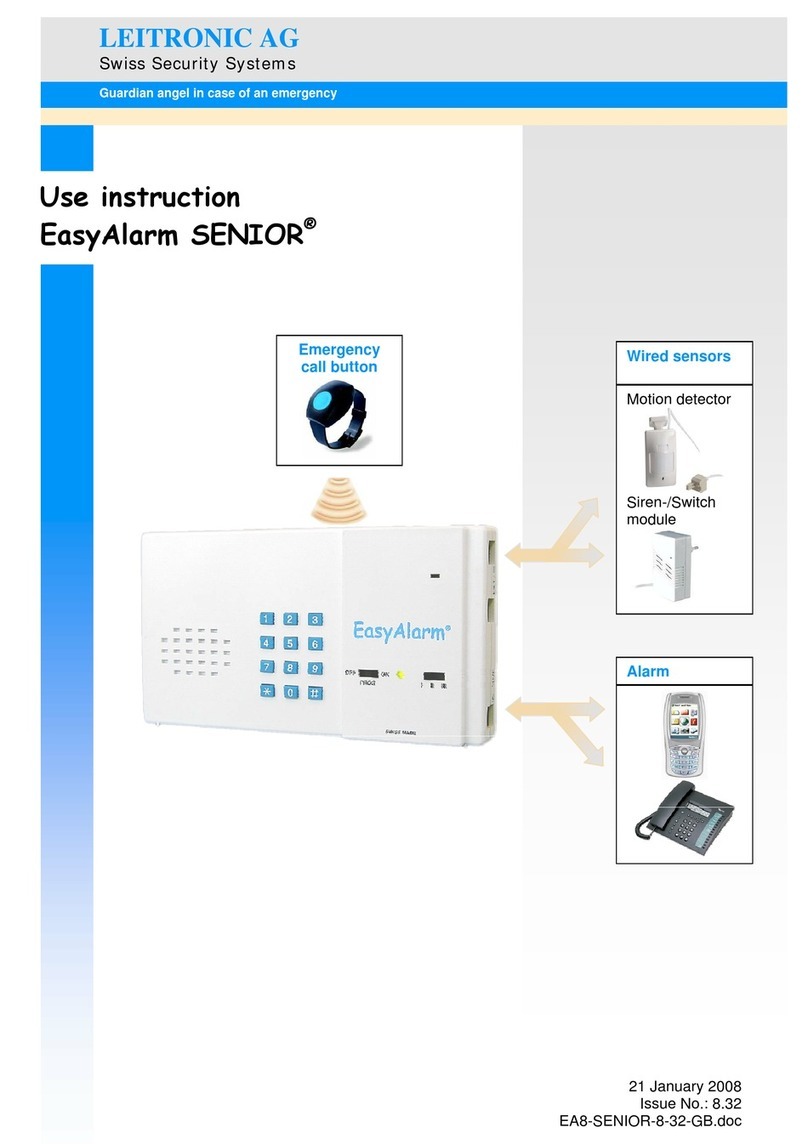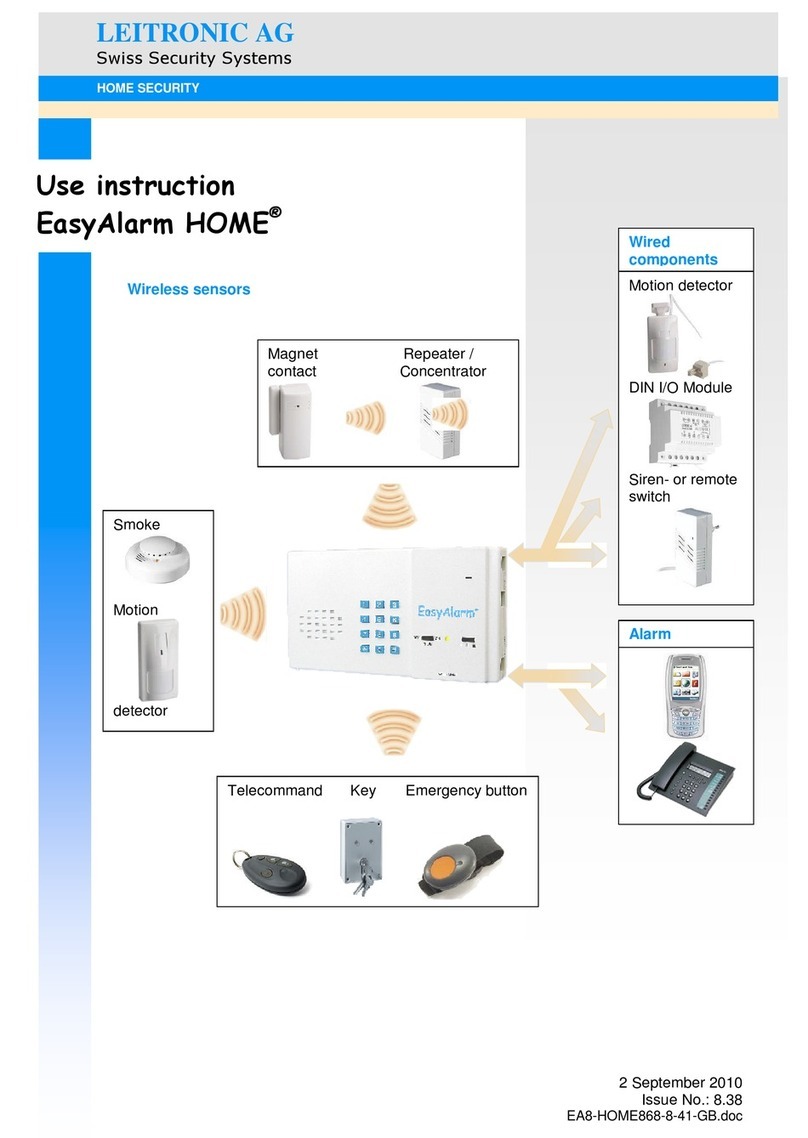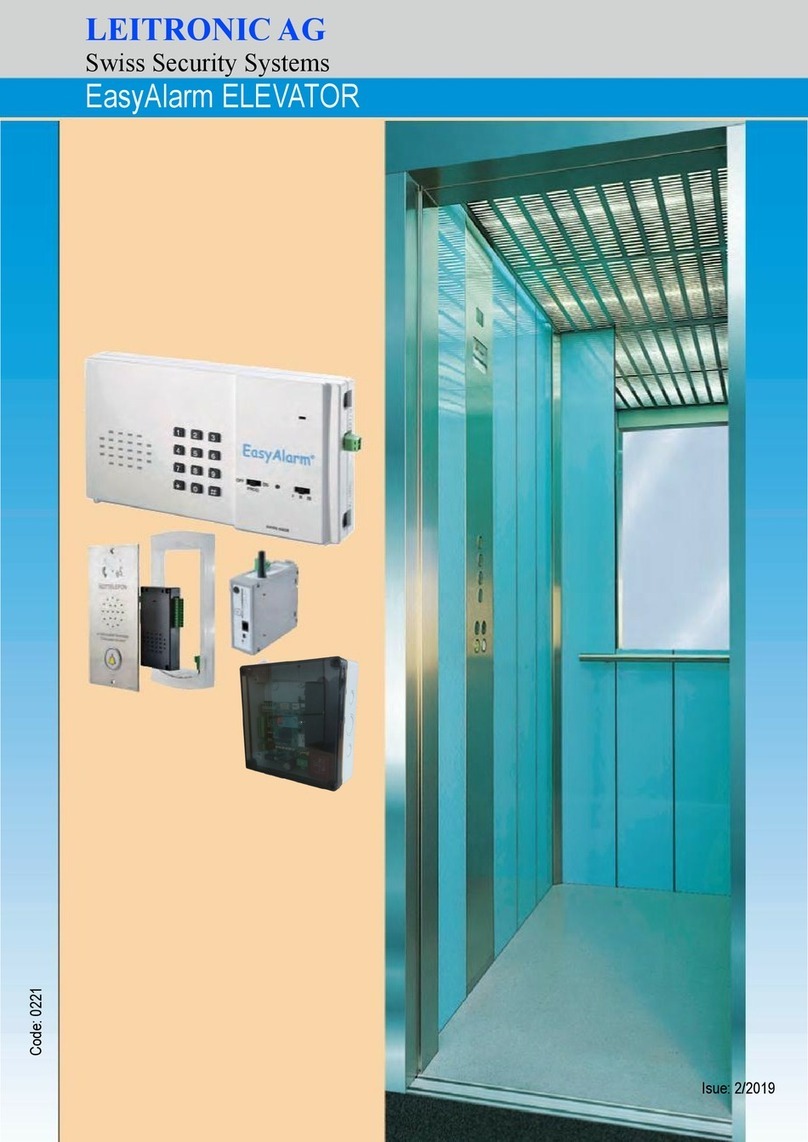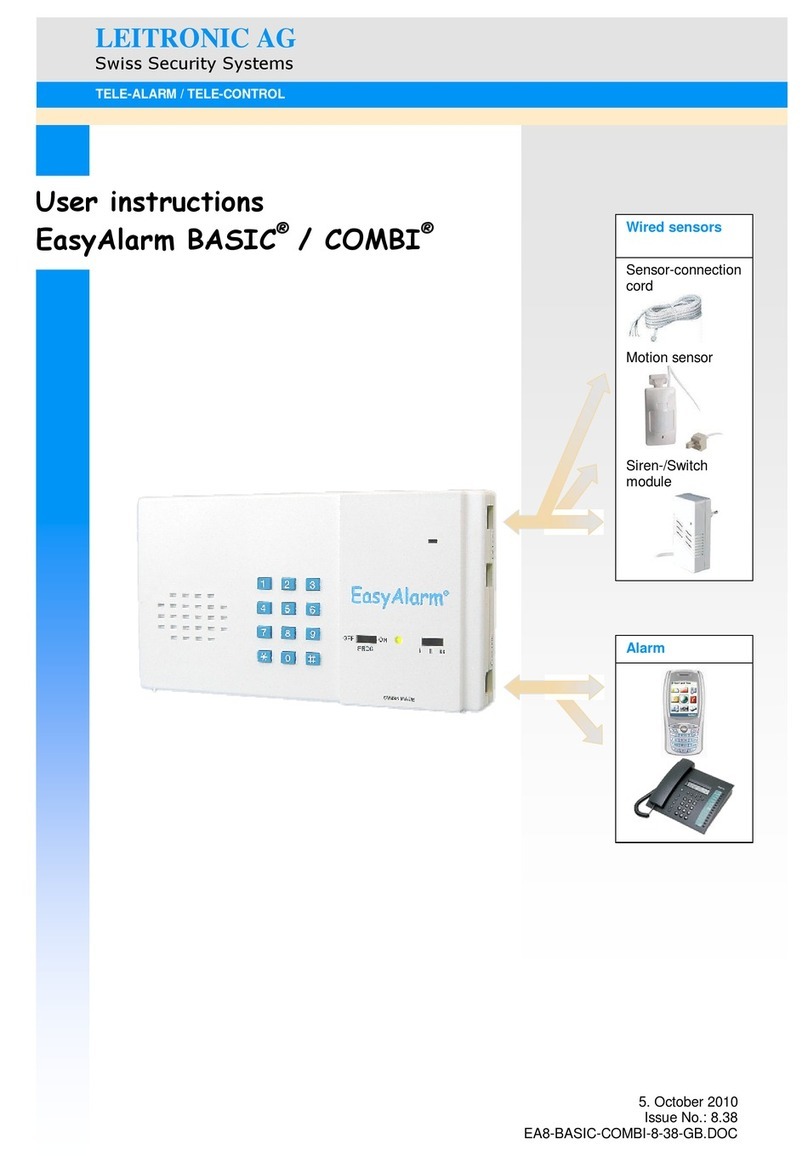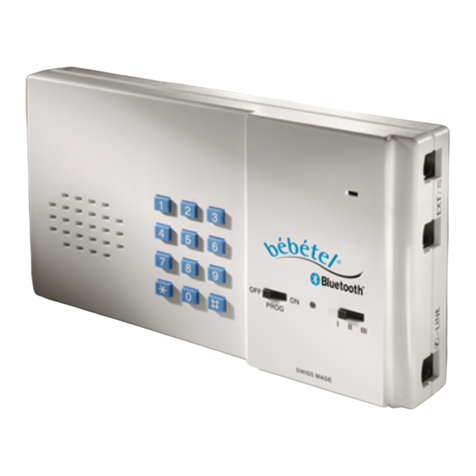2
Table of contents
1. Introduction.............................................................................................................................................. 3
2. Safety instructions .................................................................................................................................... 4
2.1 Approval...........................................................................................................................................................4
2.2 Telephone connection .......................................................................................................................................4
2.3 Wireless sensors................................................................................................................................................4
2.4 Power supply....................................................................................................................................................4
2.5 Safety notes ......................................................................................................................................................4
3. Set view / Function elements..................................................................................................................... 5
4. Setup........................................................................................................................................................ 6
4.1 Safety instructions.............................................................................................................................................6
4.2 Installation........................................................................................................................................................6
5. Man-down transmitter/receiver ................................................................................................................. 8
5.1 Wiring..............................................................................................................................................................8
5.2 MCR-308 Receiver...........................................................................................................................................8
5.3 MDT-122 Transmitter.......................................................................................................................................9
5.4 Test mode (sensor wiring / reception)................................................................................................................9
6. Programming...........................................................................................................................................10
6.1 How to program new calling numbers .............................................................................................................10
6.2 Designation of the calling number sequence ....................................................................................................11
6.3 How to select user language / How to record individual message.....................................................................11
6.4 How to program PIN-Code..............................................................................................................................12
6.5 Acoustical monitoring.....................................................................................................................................12
7. Operation.................................................................................................................................................13
7.1 Self check at power on ....................................................................................................................................13
7.2 Inactive waiting period....................................................................................................................................13
7.3 Supervision mode............................................................................................................................................13
7.4 Alarm release..................................................................................................................................................14
7.5 Alarm delay / Pre warning period / Entry delay................................................................................................14
7.6 Phone connection............................................................................................................................................15
7.7 Alarm repetition..............................................................................................................................................16
7.8 Test call..........................................................................................................................................................16
7.9 Dialling-in (check call)....................................................................................................................................16
7.10 Answering an incoming call............................................................................................................................16
8. Useful Notes............................................................................................................................................17
8.1 Tone-dialling command...................................................................................................................................17
8.2 User information.............................................................................................................................................17
8.3 Functional checks............................................................................................................................................18
8.4 Battery check / replacement.............................................................................................................................18
8.5 Maintenance ...................................................................................................................................................18
9. Trouble Shooting / Error Handling...........................................................................................................19
9.1 Telephone connection / Telephone communication..........................................................................................19
9.2 Emergency/Tilt...............................................................................................................................................19
9.3 Acoustical monitoring.....................................................................................................................................20
10. Special programming...............................................................................................................................21
10.1 Factory settings (Default-Values) ....................................................................................................................21
10.2 Alarm repetition..............................................................................................................................................21
10.3 Entry / Exit period...........................................................................................................................................21
10.4 Signalling .......................................................................................................................................................21
10.5 Shared line with telephone/modem..................................................................................................................22
10.6 Dialling-in (Remote-access)............................................................................................................................23
10.7 Remote programming......................................................................................................................................24
11. Accessories..............................................................................................................................................25
11.1 Repeater MCX-600.........................................................................................................................................25
11.2 Siren EA-SIR-RJ45.........................................................................................................................................25
11.3 230V-Switch EA-SWI-RJ45............................................................................................................................25
11.4 DIN-Adapter interface EA-ACDC-SWI-RJ45..................................................................................................25
12. Specifications / warranty..........................................................................................................................26
12.1 Specifications..................................................................................................................................................26
12.2 Warranty.........................................................................................................................................................26
13. Index .......................................................................................................................................................27
OVERVIEW MAN-DOWN-MONITORING................................................................................................... 2
Alarm scenario:............................................................................................................................................................2
